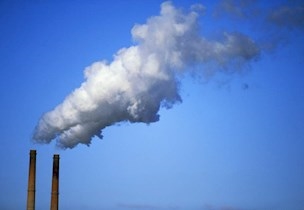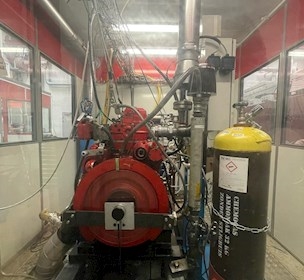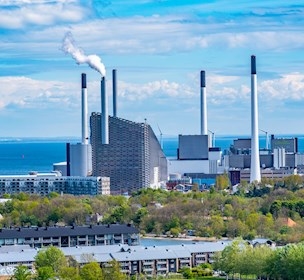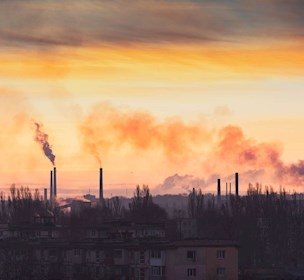Determining biogenic and fossil CO2 in flue gas, process gas, and solid and liquid fuels
Get measurements and documentation of the proportion of biogenic and fossil carbon in flue and process gases or get an analysis of the proportion of biogenic carbon in solid and liquid fuels.
When trading CO2 in the context of capturing, transporting, using, or storing CO2, you must determine and document the proportion of biogenic and fossil CO2.
This applies to the flue gases directed into the carbon capture process, to the resulting post-CO2 capture process gas, and to Power-to-X fuels produced from the resulting CO2.
The measurement results are typically used for reporting and verification of CO2 emissions according to the EU ETS trading scheme.
You need to know the proportion of biogenic and fossil CO2 in these contexts:
- Calculating CO2 emissions for a waste incineration facility
When a waste incineration facility prepares its annual emission inventory for CO2 as required according to the EU ETS scheme, it needs to know how much CO2 it emits from fossil carbon and from biological materials. Measuring the proportion of biogenic CO2 enables a waste incineration facility to document the emission of fossil-origin CO2, which is the basis for it to pay CO2 taxes to the government.
- Sales documentation for your customers
When you sell CO2, your customers need documentation on how much biogenic CO2 the delivered gas contains.
- Buying green fuels
When you buy green fuels for Power-to-X systems, you need documentation to prove that the specified proportion of biogenic CO2 is accurate.
Accredited methodology for safe, reliable measurement of biogenic CO2 in flue gases
Since January 2013, FORCE Technology has been using the carbon-14 method, as set out in EN ISO 13833, at several Danish and Swedish waste incineration facilities in order to measure annual emissions of fossil-origin CO2 to support adherence to EU’s CO2 ETS scheme. The facilities use the measured proportion of fossil-origin CO2 to calculate and report their annual CO2 emissions to the authorities.
This method is based on collection of CO2 in an alkaline liquid. CO2 is collected as a carbonate, and the carbon-14 content in the collected carbonate is then analysed in order to calculate the proportion of biogenic CO2. This method has been found to be particularly safe and reliable for measuring fossil-origin and biogenic CO2 in flue gases from mixed fuels. Collecting CO2 over long periods (typically 1 month per sample) reduces the number of samples needed per year, resulting in lower costs for sampling and analysis.
This method makes it possible to meet the uncertainty requirements for the annual fossil-origin CO2 average according to EU’s ETS scheme. Traceability and the availability of accredited testing are among the method's major advantages. Additionally, the method operates independently from the facility's own automated monitoring systems (AMS). Therefore, the method does not impose any additional requirements on the operation and quality of existing AMS and other equipment.
Carbon-14 method now applicable to process gases in CO2 capture
This method can be used to document the proportions of biogenic and fossil-origin CO2 from carbon capture when burning mixed fuels. Doing so also makes it possible to document the proportion of biogenic CO2 in transported or stored CO2. In this context, CO2 is typically measured using samples taken over a short period of time.
Measuring the proportion of biogenic and fossil carbon in solid and liquid fuels
It can be difficult to determine the proportion of biogenic carbon in fuels, particularly when it comes to fuels derived from waste flows: solid recovered fuel (SRF), refuse-derived fuel (RDF), waste oils, etc. To accomplish this, we offer analyses involving a laboratory-controlled burning of sample material followed by an analysis of the CO2 in the resulting combustion gas.
Please contact us for more information on the measurement of biogenic and fossil carbon in solid or liquid fuels.
Related content

CCUS: Safety and profitability
/Industry

Future emissions from green fuels
/Article
But what exhaust gases can we expect from these new fuels? Can we eliminate these new emissions?

What is carbon capture, and how does it work?
/Article
CO2 can be collected from combustion processes or the atmosphere via many different technologies.

Corrosion testing of materials and components for CCS
/Service
Corrosion testing of materials and components for CCS.

